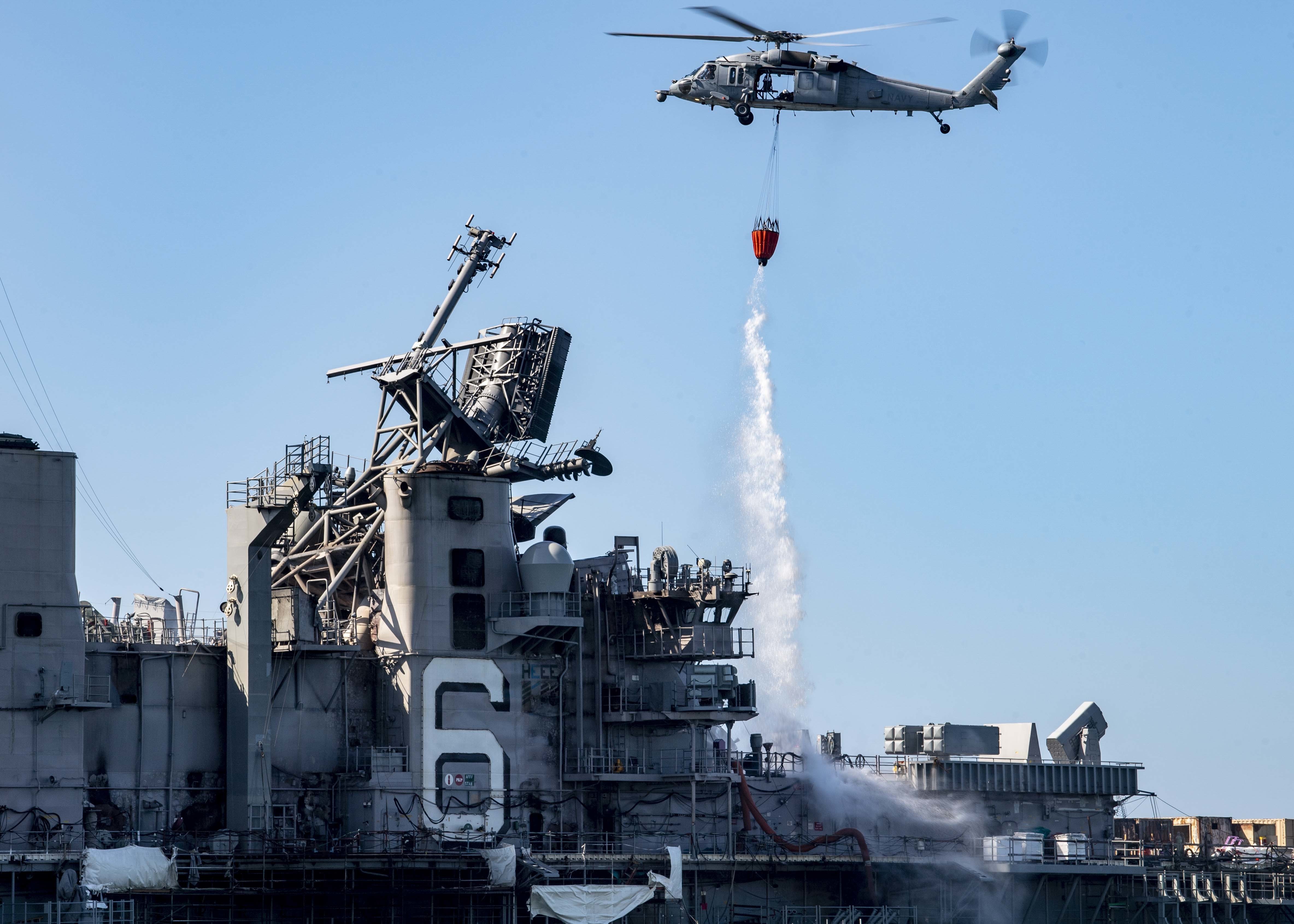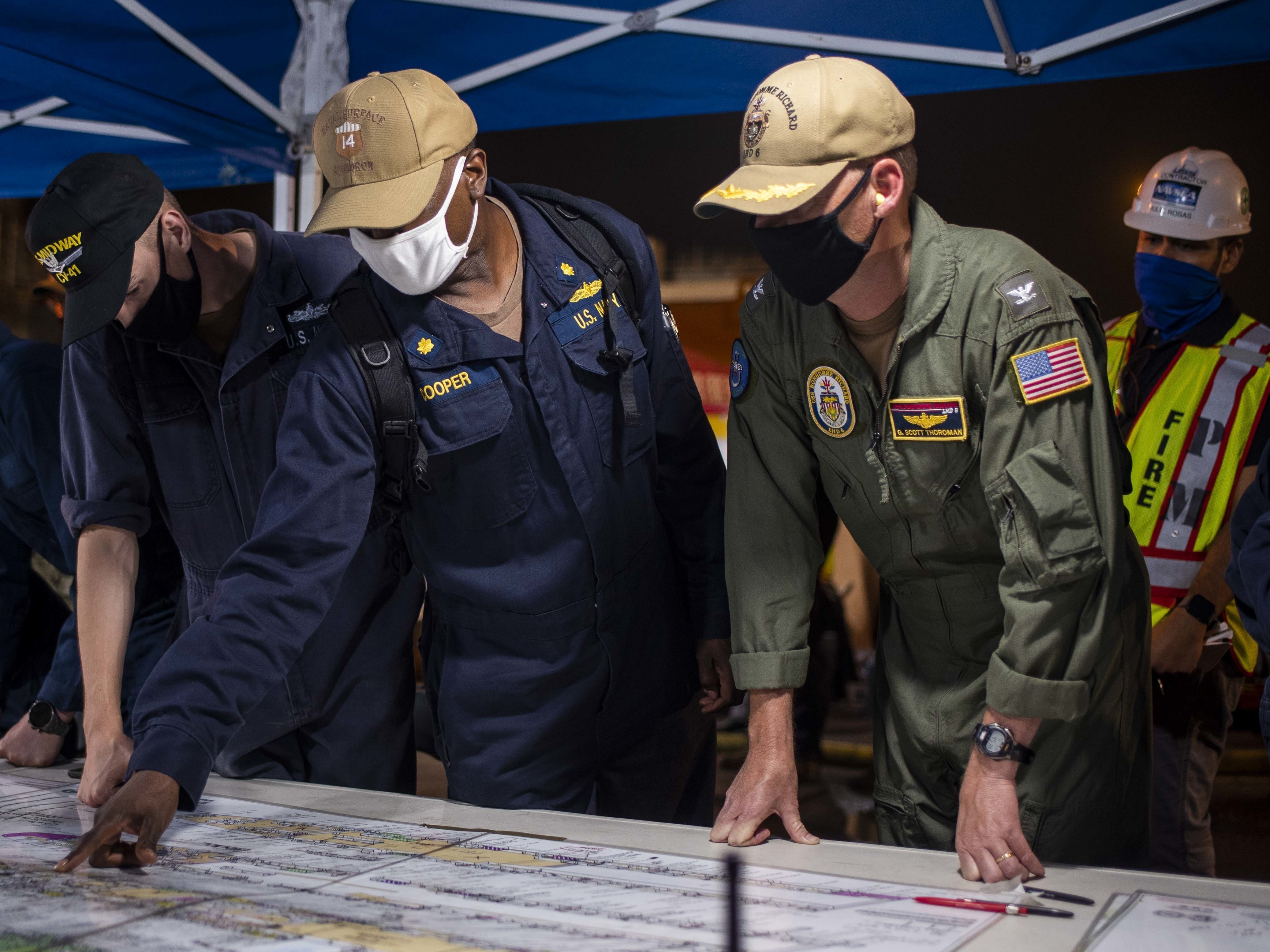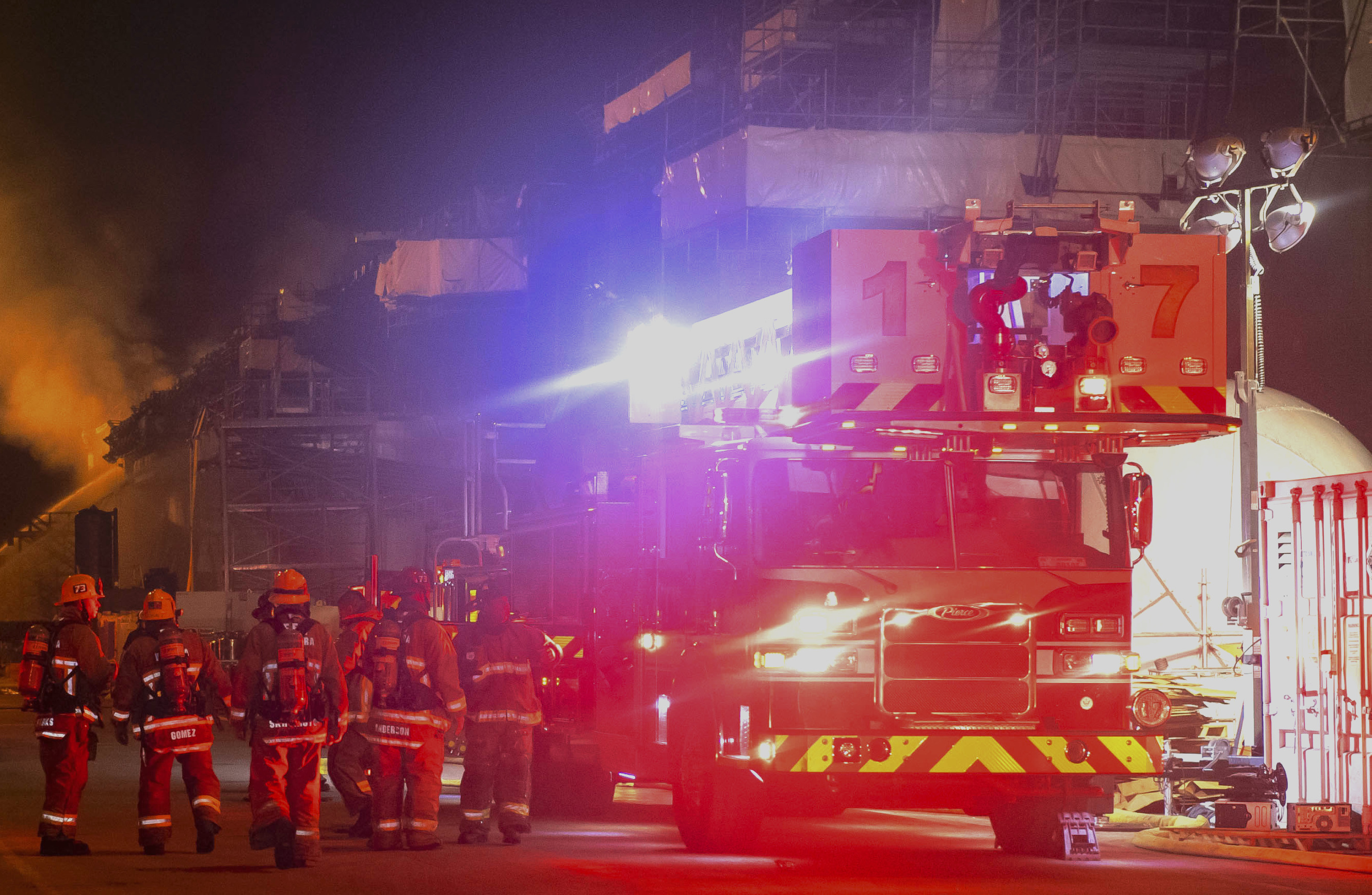
SAN DIEGO, Calif. – Federal investigators with the Bureau of Alcohol, Tobacco, Firearms and Explosives are assisting in the criminal investigation into the fire that severely damaged USS Bonhomme Richard (LHD-6), a Navy official told USNI News.
The Naval Criminal Investigation Service, “with valuable assistance provided by [ATF’s] National Response Team is conducting a thorough investigation to determine the facts and circumstances surrounding the fire aboard the USS Bonhomme Richard,” Lt. Cmdr. Nicole Schwegman told USNI News.
“NCIS regularly leverages the resources and expertise of partner law enforcement agencies for investigations,” Schwegman said in a statement Friday. “In this case, NCIS requested the assistance of the ATF NRT because they provide valuable fire investigative resources and expertise.”

NCIS investigations are done in major incidents to rule out or confirm any criminal activity that could be tied to the source or the cause, and often other federal agencies assist or consult. ATF investigators, for example, assisted NCIS in the Navy’s investigation into the 2012 fire aboard the attack submarine USS Miami (SSN-755), which was damaged by an arsonist. ATF also joined in the National Transportation Safety Board-led investigation into last year’s fatal Labor Day fire aboard a dive boat off Santa Cruz Island, Calif.
The NCIS investigation is one of three that will be done.
The Navy has assigned Rear Adm. Kevin Byrne to lead a Safety Investigation Board, Schwegman said. “Its purpose is to identify causal factors.”
Byrne took command in April of Naval Surface Warfare Center and Naval Undersea Warfare Center. Previously he served as the major program manager for Surface Ship Modernization (PMS 407) at Naval Sea Systems Command, according to his official bio.
The safety board is comprised of personnel from NAVSEA, Naval Safety Center, Naval Surface Forces Pacific, Naval Education Training Command and Naval Installations Command, she said
The third investigation – the command investigation – “has not begun due to ongoing damage control efforts,” Schwegman said. Crews continue to work on dewatering and cleanup aboard Bonhomme Richard in a major overhaul that’s being assisted by a $10 million contract with General Dynamics NASSCO.
Chief of Naval Operations Adm. Mike Gilday, who visited the ship and firefighting crews last week, vowed to get to the bottom of what happened aboard the amphibious assault ship and position the Navy to prevent such future incidents.

The fire reportedly began in the ship’s lower vehicle deck and quickly spread amid at least two explosions. Several dozen sailors and firefighters were injured, but none severely as they fought searing heat, flames and smoke as the fire spread throughout the ship’s 11 decks and destroyed most of the ship’s superstructure.
Navy officials have not pointed to any specific cause of the fire but promise thorough investigations that Gilday said would be made publicly available once they are completed.
That ATF agents are called in to help in the investigation “is not unprecedented, but it’s unusual,” said Lawrence Brennan, a retired captain and professor of admiralty and maritime law at Fordham University in New York City. “The Navy has brought in experts as consultants in the past.”
Of particular concern to Brennan are the explosions that rocked the ship and pier where the ship’s fire teams and federal and civilian firefighters were organized. The force of the explosions knocked down several crews. “It appeared to be an explosion of violent force,” Brennan said. One of the explosions was heard 13 miles away.
“Was it a reflash or an expansion of the fire?” he said, noting there were no reported burn injuries among ship’s crew or firefighters. Officials have characterized them as “minor injuries” that included smoke inhalation and heat exhaustion, as well as a broken hand sustained from the force of an explosion.
“The absence of burn injuries… suggests it wasn’t aflame. So what was the fuel?” he added. Brennan said he had worked on cases that involved a BLEVE, or boiling liquid expanding vapor explosion. That happens when temperature of a pressurized liquid inside a tank, container or other vessel exceeds the liquid’s boiling point and, without some pressure release valve or opening, will cause the container to fail and explode. The liquid “can be something as benign as water,” he said. Vapors also could ignite materials that could burn and spread a fire, which can worsen due to the “chimney effect” of a ship in the shipyard with hatches open that can further spread of heated gas and flames.
“The Navy needs to be open and candid about issues as this, and painful as it is,” Brennan said.





